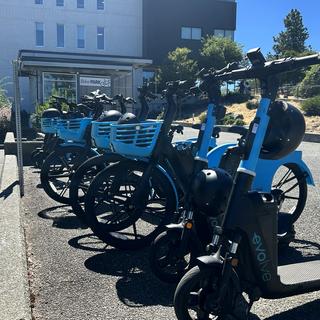Resumes, cover letters, interview prep and more: advice from an expert
Having a great resumé and cover letter can lead to incredible opportunities and knowing how to showcase to employers why you’re the perfect candidate for the job is essential for getting that first interview.
A great resource for VIU students is the Centre for Experiential Learning’s Resume and Cover Letter Workshop on VIULearn, which Career Services Specialist Paula Deering recently revamped. This workshop is entirely self-paced and is available to all students. We recommend taking the course for a deep dive into improving your cover letter and resumé, but to give students a sense of what to expect, Paula shares some of her career advice in this blog post to help students prepare for their job search. Here are her top tips:
Preparing to apply
Try not to procrastinate. When it comes to getting ready, get involved in internships and co-ops, volunteer roles that enhance your learning, or extra-curricular activities that build graduate attributes. Reflect on your passions and strengths and try to align with them.
“I believe in what the Chaos Theory tells us and I encourage students to be open-minded and curious, experience new things and look for signs. Don’t be afraid to take risks and be flexible,” says Paula. “It’s important to celebrate successions, but equally important to understand our failures and learn from them. Trust your instincts and keep in mind that there isn’t always a correct or right path.”
Build your resumé
Organization
Choose a resumé format that works best for you. Chronological resumes are best used for lots of experience and career progression, functional resumes are best if you have a gap or are changing careers, and combination, or hybrid, resumés combine both types to target the position.
Use clear sections: summary, skills and accomplishments, employment history and education. List graduate and undergraduate degrees if that makes sense for you. If you have more education than work experience, that’s okay.
Research
Researching the job posting is super key. Hold informational interviews to get a better understanding of what the organization expects to see. Know what you’re targeting, know your value and what skills you have to match the role. Your resumé is a marketing document; it’s not going to get you a job, it’s going to get you an interview.
Showcase your skills
If possible, get in front of the hiring manager. It’s best if you can send them the resumé directly. When we’re crafting resumés, it’s important to think about getting past the eliminator, which could be a computerized system or a person. Use the exact same language as the posting and use key words but be honest.
Appeal to the selector; the person who has decision-making abilities. Think about skills that would make your transition easy. Speak to the needs of the company and demonstrate a deep understanding of the role and your value. Use the STAR Method, which is explained in VIULearn.
Do your best
Make it error free, take your time, do your best. The biggest mistakes on a resumé are spelling errors and sloppy work. Step away from it, come back to it, have someone read it for you.
Creating your cover letter
Use formal business correspondence format
Don’t regurgitate your resumé. A resumé is an historical document, but a cover letter is an introduction. It’s a conversational document intended to build an emotional connection with the employer.
The biggest thing is to follow the instructions of the employer. If the employer is asking for a cover letter, they want to see you can write a professional document. Information on formatting your cover letter can be found in the VIULearn workshop.
Create a unique first paragraph
Start with admiration – why you love the brand. Or start with connecting the dots to why you’re applying. I don’t like cover letters that say, “My name is Joe Smith and I’m applying for …” Employers are looking for something that stands out.
Explain your value proposition
Why are you exactly what that employer needs? Understand what problems the employer is facing and how you can bring solutions, and tell them about it. Use your STAR stories to develop evidence-based examples that explain your value.
Make an effort to match the company tone or culture. Research them. Talk to people in there. We want to hire people that are like us. We want people that are going to fit in. Understand the company so you can create a tone that matches the company’s culture.
Job interview essentials
Make a good impression, be on time, be professional and dress for success. Test equipment and make sure it’s all working well and print extra copies of your resumé. Make eye contact, use good posture, take your time and breath.
One of the biggest things is to really research the job postings so you can try to anticipate what they’re going to ask and really develop those STAR stories to match that. How are you going to showcase to the employer that you bring value?
Make sure you have valuable questions at the end. What is a typical work day in this role? What are the challenges? What characteristics do you look for in a candidate that would be successful in this role? What does success look like in this position and how do you measure it? Are there are opportunities for professional development? How are you helping employees succeed?
Always follow up with a thank-you note or email within 24 to 48 hours.
Check out the Career Studio this fall
A Career Studio is being launched in Building 255 this fall. There will be one-on-one assistance on career and resumé cover letter skills and interview skills. There will be workshops. We’ll be hiring marketing, communications and graphic design interns, and four positions for Career Studio Peer Facilitators.
To learn more about Career Studio, or to enroll in the CEL’s Resumé and Cover Letter Workshop in VIULearn, email CEL@viu.ca.
Lillian Morpak is a Career and Co-operative Education Assistant with VIU’s Centre for Experiential Learning.




